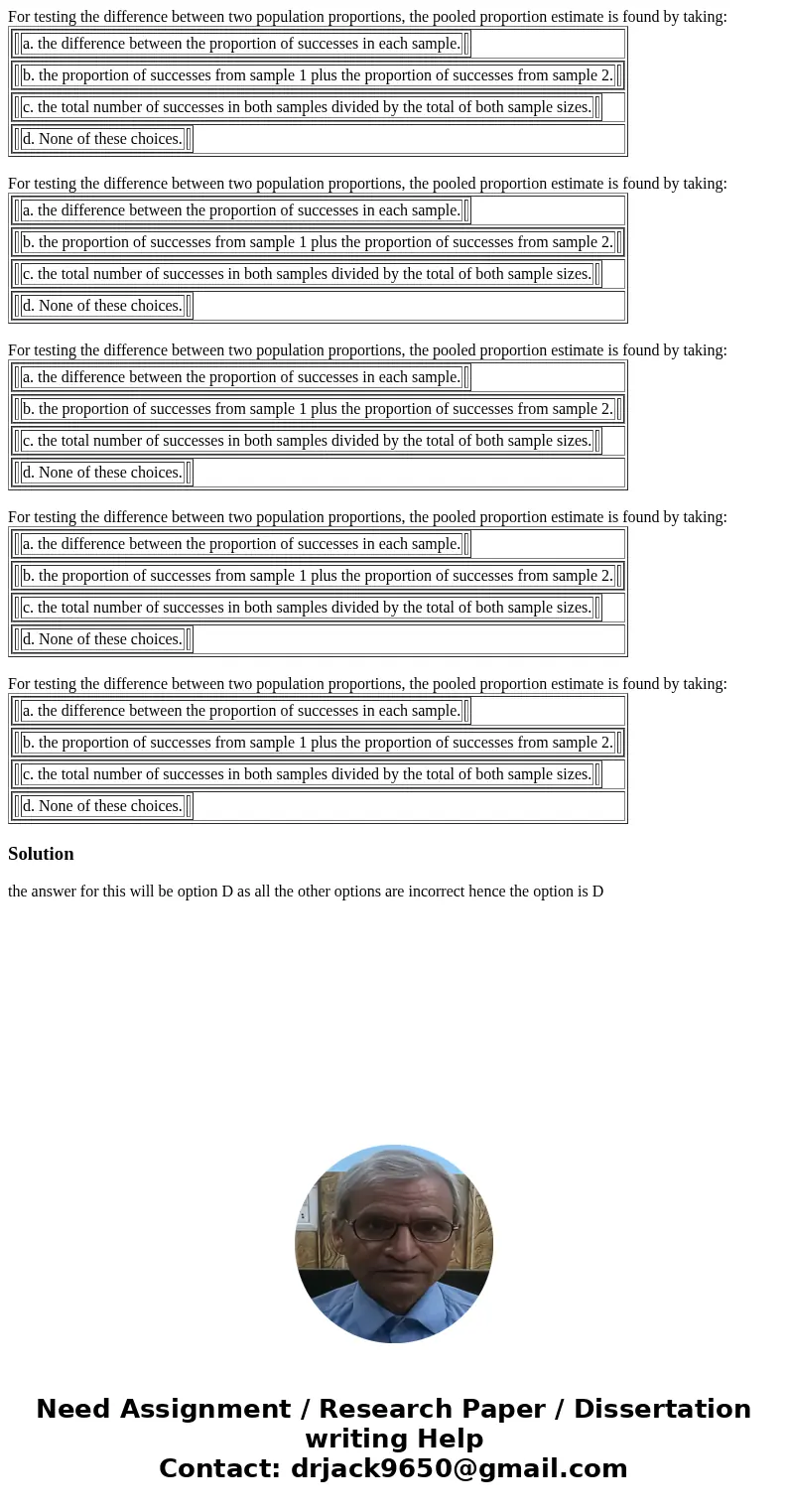For testing the difference between two population proportions, the pooled proportion estimate is found by taking:
| a. the difference between the proportion of successes in each sample. | | |
| b. the proportion of successes from sample 1 plus the proportion of successes from sample 2. | | |
| c. the total number of successes in both samples divided by the total of both sample sizes. | | |
| d. None of these choices. | | |
For testing the difference between two population proportions, the pooled proportion estimate is found by taking:
| a. the difference between the proportion of successes in each sample. | | |
| b. the proportion of successes from sample 1 plus the proportion of successes from sample 2. | | |
| c. the total number of successes in both samples divided by the total of both sample sizes. | | |
| d. None of these choices. | | |
For testing the difference between two population proportions, the pooled proportion estimate is found by taking:
| a. the difference between the proportion of successes in each sample. | | |
| b. the proportion of successes from sample 1 plus the proportion of successes from sample 2. | | |
| c. the total number of successes in both samples divided by the total of both sample sizes. | | |
| d. None of these choices. | | |
For testing the difference between two population proportions, the pooled proportion estimate is found by taking:
| a. the difference between the proportion of successes in each sample. | | |
| b. the proportion of successes from sample 1 plus the proportion of successes from sample 2. | | |
| c. the total number of successes in both samples divided by the total of both sample sizes. | | |
| d. None of these choices. | | |
For testing the difference between two population proportions, the pooled proportion estimate is found by taking:
| a. the difference between the proportion of successes in each sample. | | |
| b. the proportion of successes from sample 1 plus the proportion of successes from sample 2. | | |
| c. the total number of successes in both samples divided by the total of both sample sizes. | | |
| d. None of these choices. | | |
the answer for this will be option D as all the other options are incorrect hence the option is D

 Homework Sourse
Homework Sourse